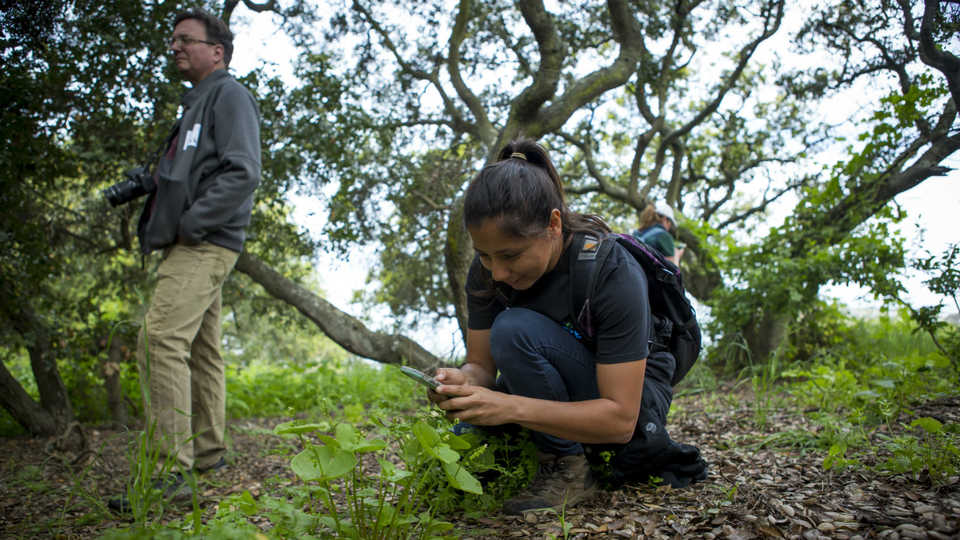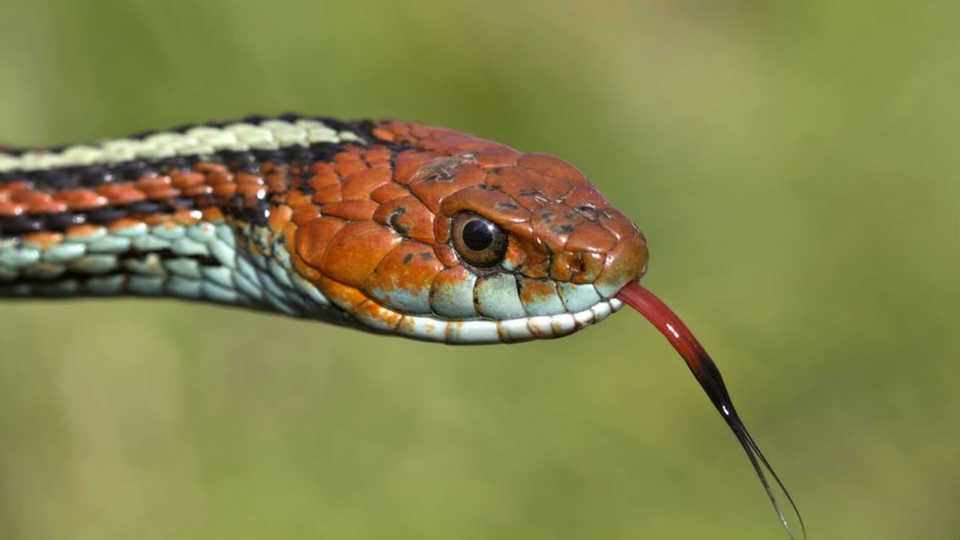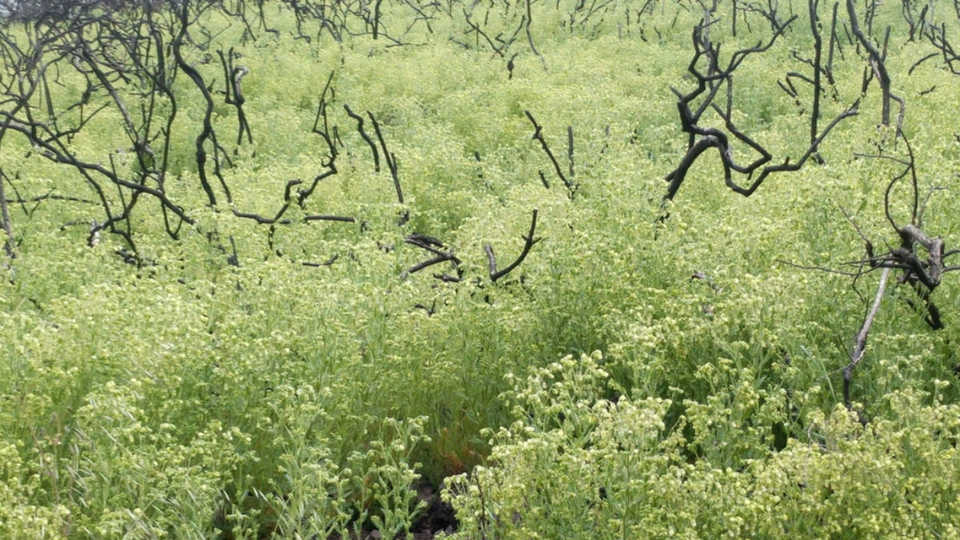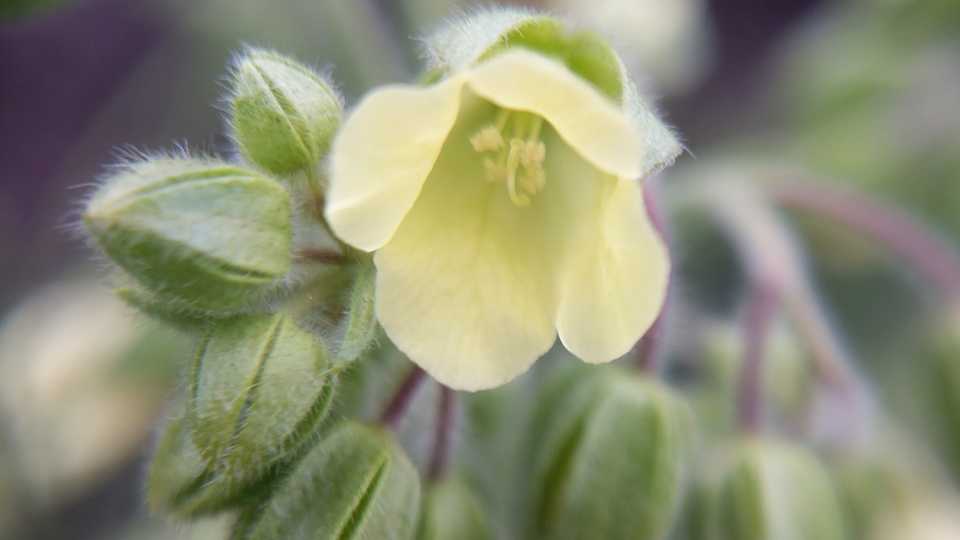Citizen scientists from around the globe submit over 400,000 iNaturalist observations in the wildly successful, third annual competition.
SAN FRANCISCO (May 4, 2018) — The San Francisco Bay Area has won the third annual City Nature Challenge, with the results—announced today—showing record engagement. The citizen science competition invited people of all ages and science backgrounds to submit pictures of wild plants and animals using the free mobile app iNaturalist, powered by the California Academy of Sciences and National Geographic. Sixty-eight cities across five continents competed to log the most observations, the most species, and to engage the most people—together creating a valuable snapshot in time of urban biodiversity. From sightings of critically endangered species to documenting rare wildflowers in post-burn regions of the North Bay Fires, the competition underscored the power of citizen science to contribute data for use by the scientific community.
After organizing the first-ever Challenge in 2016, the Natural History Museum of Los Angeles County (NHMLA) and San Francisco’s California Academy of Sciences expanded the competition from 16 U.S. cities in 2017 to nearly 70 cities across 17 countries in 2018. This year’s Challenge tallied over 400,000 observations (a threefold increase from last year), engaged over 17,000 observers (over a fourfold increase from last year), and recorded over 18,000 species (more than doubling last year’s count) around the globe. The San Francisco Bay Area earned the highest numbers among participating cities in all three categories—accounting for nearly ten percent of the entire competition’s observations—but every city’s observations will prove invaluable to science.
“Our hope is that by introducing people to the Challenge, they’ll stay curious and share their nature discoveries throughout the year,” says Dr. Rebecca Johnson, co-director of Citizen Science at the Academy. “We’ve spent the last several years building partnerships with amazing local organizations in the Bay Area and beyond that have brought people together to document wildlife in their backyard. The passion and organization of this incredible community is what catapulted us to win this year.” Over 300 partner organizations across the globe hosted biodiversity surveys. iNaturalist witnessed the largest influx of observations in its history during the four-day Challenge.
San Francisco Bay Area by the numbers
-
1,532 observers
-
41,737 observations submitted to iNaturalist
-
Contributors averaged 27 observations
-
3,211 species documented
-
Most observed species: the California poppy
San Francisco Bay Area highlights
-
San Francisco garter snake. This subspecies of garter snake is endangered and only found in the greater San Francisco Bay Area. An estimated 1,000 – 2,000 adult individuals remain in the region.
-
Hammerhead worm. An Oakland observation of a striking worm that’s native to Asia may be the first ever recorded in the U.S.
-
Whispering bells. This beautiful wildflower is considered a “fire follower” of the North Bay Fires. The whispering bell was rarely seen in Sonoma County (where it’s currently blooming in large fields) since the last fire swept through in the 1960s.
-
Bobcat. A bobcat spotted along a neighborhood street in Bodega underscores how humans and wildlife have come to co-exist.
-
San Francisco forktail. Found only in the San Francisco Bay Area, this beautiful damselfly is endangered.
World by the numbers
-
17,329 observers
-
423,845 observations submitted to iNaturalist
-
Contributors averaged 25 observations each
-
18,116 species documented
-
Most observed species: the common dandelion
World highlights
Highlights from around the U.S. and the world include a baby Atlantic pygmy octopus off Miami, an endangered freshwater turtle outside of Baltimore, a chameleon only found in the Andes Mountains, an endangered woodpecker in southwestern Louisiana, and observations from Palmer Station in Antarctica. The first-time participation of cities like London, Kuala Lumpur, Monterrey, Prague, Hong Kong, and Bogotá added over 100 species to iNaturalist that have never been recorded in the platform’s history.
The current landscape of urban biodiversity is poorly understood. As global human populations grow increasingly concentrated in cities, documenting urban biodiversity—and our impact on it—is a crucial part of understanding our shared future.
“Citizen science observations increase our understanding of how biodiversity is changing across various regions,” says Alison Young, the Academy’s co-director of Citizen Science. “This year, participation in the City Nature Challenge allowed us to bring in record-breaking amounts of data to help scientists identify larger trends in shifting species ranges around the world. It’s also an opportunity to show people species they never knew existed in their neighborhood.”
Large pools of data, including those built by iNaturalist and natural history museums, aid in scientific research and help land managers make informed conservation decisions that allow humans to sustainably coexist with regional plant and animal life.
Partner city observations and hi-res photos available upon request.
The California Academy of Sciences is a renowned scientific and educational institution dedicated to exploring, explaining and sustaining life on Earth. Based in San Francisco’s Golden Gate Park, it is home to a world-class aquarium, planetarium, and natural history museum, as well as innovative programs in scientific research and education—all under one living roof. Visit calacademy.org for more information.
Press Contacts
If you are a journalist and would like to receive Academy press releases please contact press@calacademy.org.
Digital Assets
Hi-res and low-res image downloads are available for editorial use. Contact us at press@calacademy.org to request access.




